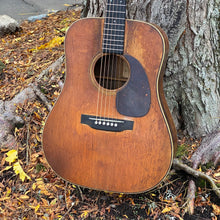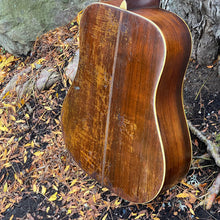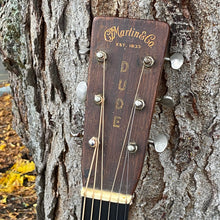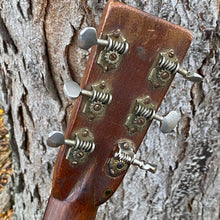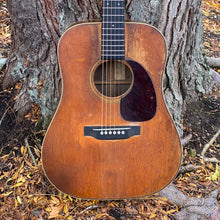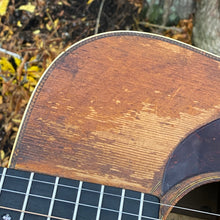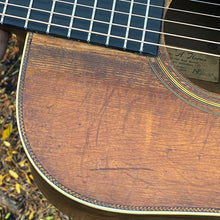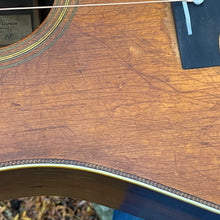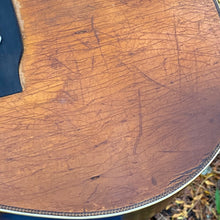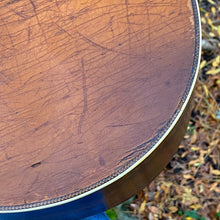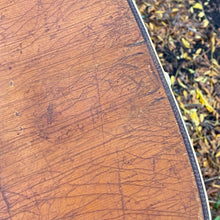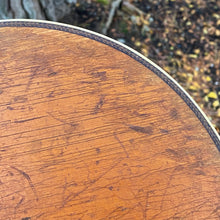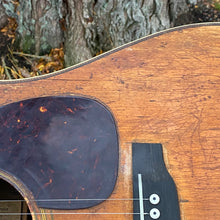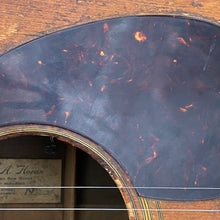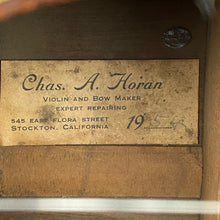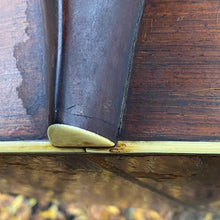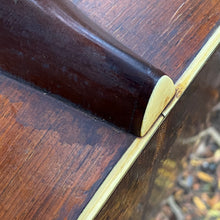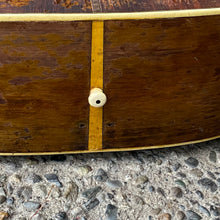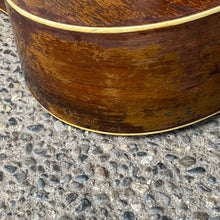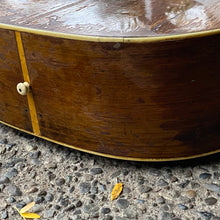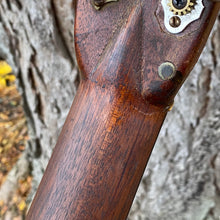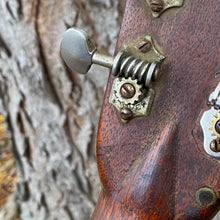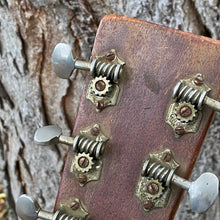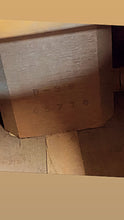
Text 3602011374 to discuss the guitar and payment before purchasing
-
The “Dude“ is for sale! One quick glance at the headstock face, gives you a big clue as to how it got its name :-).
I got an amazing deal on this, and I will be donating 1/3 of the proceeds to charity.
Call or text my shop number for an in hand description.
This 1937 Martin D-28 was literally rescued from being thrown into a dumpster. (Don’t worry, it didn’t actually make it inside one).The story on the guitar is as follows. The previous owner acquired it from his friend who had inherited it from his uncle after he passed away. compared to a “new” instrument the guitar seemed to be in such poor condition that he figured it was worthless. When he was about to throw it away, his friend asked if he could have it. Thinking it was junk he happily acquiesced.
Thankfully, it mainly only needed fairly standard servicing and repair work to get it up and playing. I’ve opted not to go too deep in terms of a neck reset and full restoration. We basically took the “string it up and go” approach, and only did what was needed to get it up and enjoyable/playable condition. Since I figured the next owner may want to have their own preferred repairman do that work. The good news is we were successful in that endeavor and it currently plays nicely.
The guitar still sports the heavily worn original finish and bracing. The Maple bridge plate is also a Original. At some point in the 1950s the guitar was serviced at a violin shop. I am not exactly sure what work they did. The information of that repair shop is on a sticker in the sound hole. When I acquired it, it had a poorly made bridge that was no longer glued to the body body along with a small tail piece. That tailpiece and bridge are included in the sale. You can still see the shadow/footprint of the tail piece on the bottom of the body although it’s not that bad. There are two very small holes by the heel where it was screwed in at the bottom.
Cosmetically the guitar is in rough condition, but the original finish is still there. I do not see signs of overspray, and given the heavy wear that is doubtful. there that the neck has been previously reset at some time. There appears to be some glue residue from that work near the tongue area by the sound hole and in a couple other places. Probably could be removed easily if you want. It’s possible that the pickguard was also a reglued at some point but I can’t be 100% certain given the amount of wear. The guard shows the proper aging for a vintage Martin Guitar of the era.
As noted above, we took the “string it up and go“ approach to servicing. The guitar has been fully refretted. A new bridge was made for the guitar since the original was gone. The bridge is slightly thinner than a stock example to maximize good action and playability but without compromising structural stability. The action is currently good, but will require a neck reset if you want a standard thickness bridge, and full saddle height. Again, we opted for a more minimalist approach because we figured the next owner would prefer their own luthier to do the work or may just enjoy keeping it as is.
At some point along the way, the guitar suffered a headstock crack. The neck was not “decapitated,” but just cracked along the volute. My guess it occurred due to a “tuner bump,” hence the one replaced tuner. It has been re-glued and is solid. A strap button was also installed on the head stock using a screw. That hole has been filled. Likely during the first neck reset, the very tip of the heel cracked down was reglued. It’s less than an eighth of an inch and even across the heel, but it is there. As you would expect based on the condition, the guitar has also had several crack repairs in various areas which have been sealed up.
One tuner is currently a modern replacement. I am looking for an era-correct replacement.
A note on pricing. As a guitar shop my job is to sell these guitars for the most money I think I can get for it on the market. The last herringbone prewar D-28 I had ended up selling Recently at another shop for about twice what I am asking for this one. That’s where I put my asking price but I am more than open to offers so feel free to send me what you would like to pay for it. It’s obviously a “holy Grail“ level model. Even bursts with issues go for a lot of money. That’s also the case here. Again, if you don’t like my asking price, just send me an offer :-). Yes, I got an amazing deal on it.
This is clearly a player grade instrument with a decent amount of repairs. I’ve done my best to disclose everything but if you have any questions or want for the details, don’t hesitate to ask.
Comes in a modern hard shell case .
Good ConditionGood condition includes items that are in fine working order, but have significant cosmetic imperfections. A pedal with scratches and dents on its chassis, a guitar with some cracks in the binding, or an old snare drum with some corrosion on the lugs would all be classified as Good. Items with dents, cracks or corrosion qualify as Good as long as they are still playable and fully functional.

























